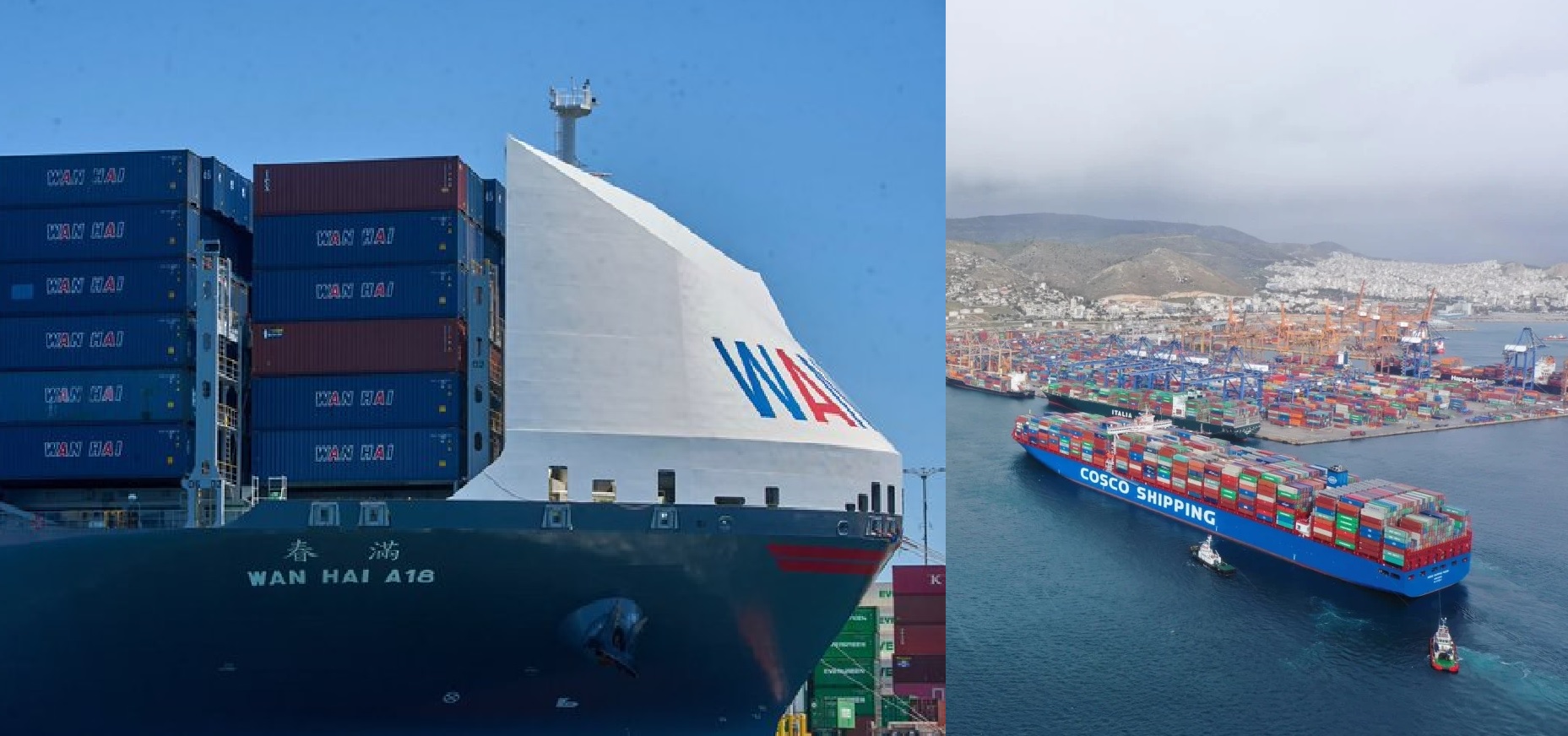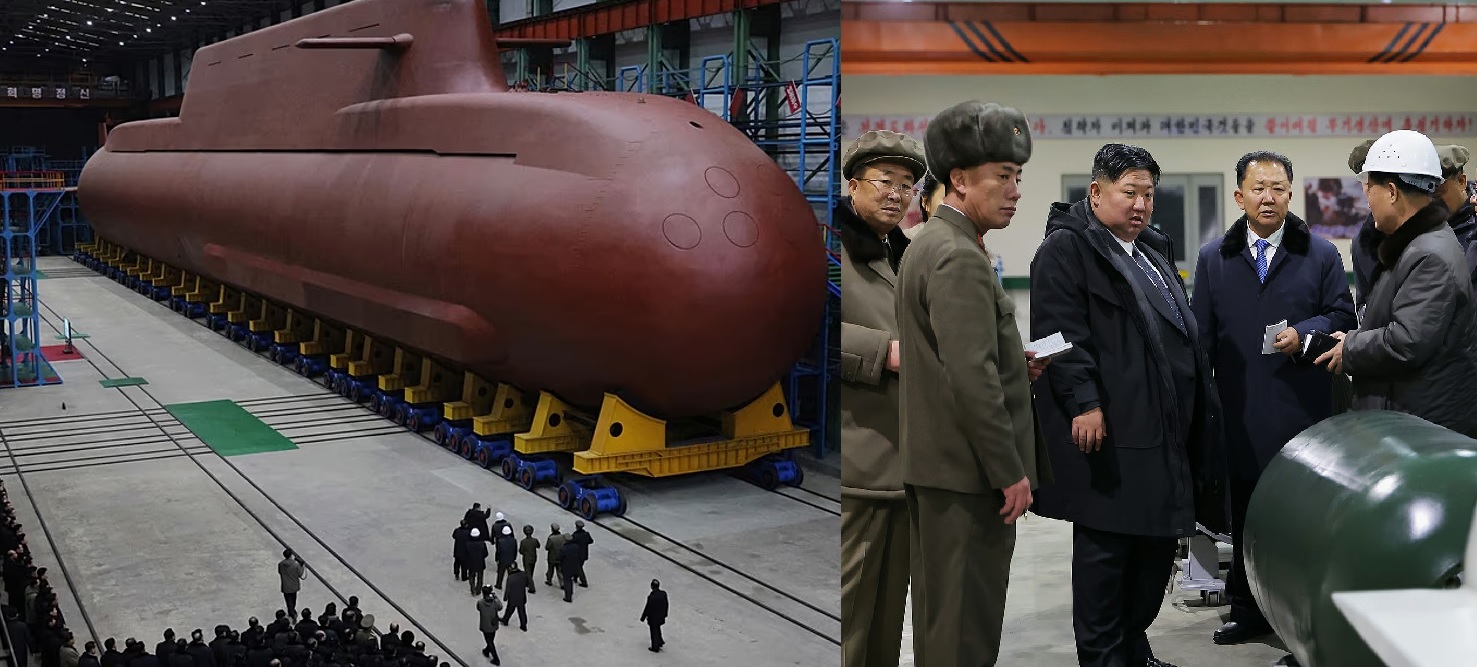China Unveils the World’s First Thorium-Powered Cargo Ship, Carry up to 14,000 Shipping Containers

China has unveiled the world’s first thorium-powered cargo vessel, marking a significant milestone in nuclear maritime engineering and energy innovation. According to the South China Morning Post, the newly developed vessel is powered by a 200 MW thorium molten salt reactor (TMSR) and is capable of carrying up to 14,000 standard shipping containers, making it one of the largest and most advanced nuclear-powered cargo ships ever built.
The announcement highlights China’s push to apply thorium-based nuclear technology beyond land-based reactors, extending it into the commercial shipping sector — a move that could transform how long-haul maritime transport operates. The vessel’s reactor uses thorium-232, a fertile element that breeds uranium-233, the actual fissile material, through a neutron absorption process. Unlike traditional uranium or pressurized-water reactors, this design operates using molten fluoride salts as both fuel and coolant, allowing the system to function at low pressure but high temperature, increasing safety and thermal efficiency.
A New Kind of Power at Sea
At the heart of the ship lies the molten salt reactor, which generates around 200 megawatts of thermal energy. This output is converted through a supercritical CO₂ Brayton cycle, achieving thermal-to-electric conversion efficiency of nearly 45–50 percent — far higher than conventional marine engines. The system also eliminates the need for vast volumes of high-pressure steam and cooling water, making it more compact and theoretically safer for maritime use.
The ship’s design includes advanced shielding and containment systems, compact reactor control rooms, and redundant safety loops. It will also feature secondary diesel backup generators providing around 10 MW of auxiliary power for emergency operations or port maneuvering.
Engineering Challenges
Adapting thorium molten salt reactor technology — originally designed for stationary land-based power generation — to a mobile, compact maritime platform was one of the most complex tasks faced by Chinese engineers.
A land-based thorium reactor typically operates in a large, static containment facility with extensive cooling and fuel handling infrastructure. Miniaturizing that into a reactor small enough to fit within a ship’s hull required major breakthroughs in heat exchange systems, corrosion-resistant materials, and modular reactor design. The motion and vibration of the marine environment introduced new engineering problems, as molten salt must circulate smoothly through heat exchangers even when the ship is rolling or pitching at sea.
Another challenge lay in thermal management and safety. Thorium reactors operate at higher temperatures (typically 600–700°C), which necessitated the development of nickel-based superalloys capable of withstanding continuous exposure to hot, corrosive salts. China’s materials research institutes reportedly developed new alloy coatings to ensure long-term operation in a marine setting.
Moreover, converting the land-based fuel cycle — which includes online reprocessing of thorium fuel and removal of fission products — into a closed, sealed marine module required a rethinking of fuel handling and waste retention. The ship’s design reportedly includes an onboard containment system that stores fission products for years until the ship returns to port for maintenance.
From Land to Sea: A Decade of Development
The project builds on China’s earlier success with the TMSR-LF1, a 2 MW experimental molten salt reactor completed in Gansu province in 2021. Data from that land-based prototype helped engineers refine salt chemistry, materials handling, and safety systems. Scaling that up to a 200 MW maritime reactor involved a decade of parallel work between China National Nuclear Corporation (CNNC), Shanghai Marine Design and Research Institute, and several academic partners.
According to reports, the Chinese Academy of Sciences (CAS) supervised early-stage R&D for the molten salt reactor design, while naval and commercial shipyards collaborated to adapt it to maritime specifications.
Strategic and Environmental Impact
If successful, the thorium-powered vessel could dramatically reduce global shipping emissions. Current container ships burn tens of thousands of tons of heavy fuel oil annually, contributing heavily to global CO₂ and sulfur emissions. A thorium reactor, in contrast, produces zero greenhouse gases during operation and can run continuously for several years before refueling.
China also sees thorium as a strategic resource. The country holds some of the world’s largest thorium reserves, giving it a potential edge in developing non-uranium-based nuclear fuel cycles. Unlike uranium, thorium cannot be directly weaponized, making it more acceptable for peaceful applications.
Future Prospects
While this development is groundbreaking, it is still at the prototype stage. Before commercial deployment, China must address several remaining issues, including international maritime nuclear regulations, crew safety certification, and insurance frameworks for nuclear-powered civilian ships.
Still, the ship’s unveiling demonstrates China’s growing confidence in molten salt reactor technology. If the design performs as expected, it could pave the way for a new generation of long-range, zero-emission cargo vessels capable of sailing for years without refueling — a concept that was once confined to science fiction.
By successfully adapting thorium reactor technology from land to sea, China has opened a new chapter in clean maritime propulsion, positioning itself at the forefront of nuclear-powered shipping innovation.
✍️ This article is written by the team of The Defense News.
Top 3 Latest Posts
Leave a Comment: Don't Wast Time to Posting URLs in Comment Box
2025-11-07 18:34:04
While China is about to build nuclear powered cargo ships, the US is seriously looking at improving the steam piston engine and improve the roads so more horses can travel on them.






